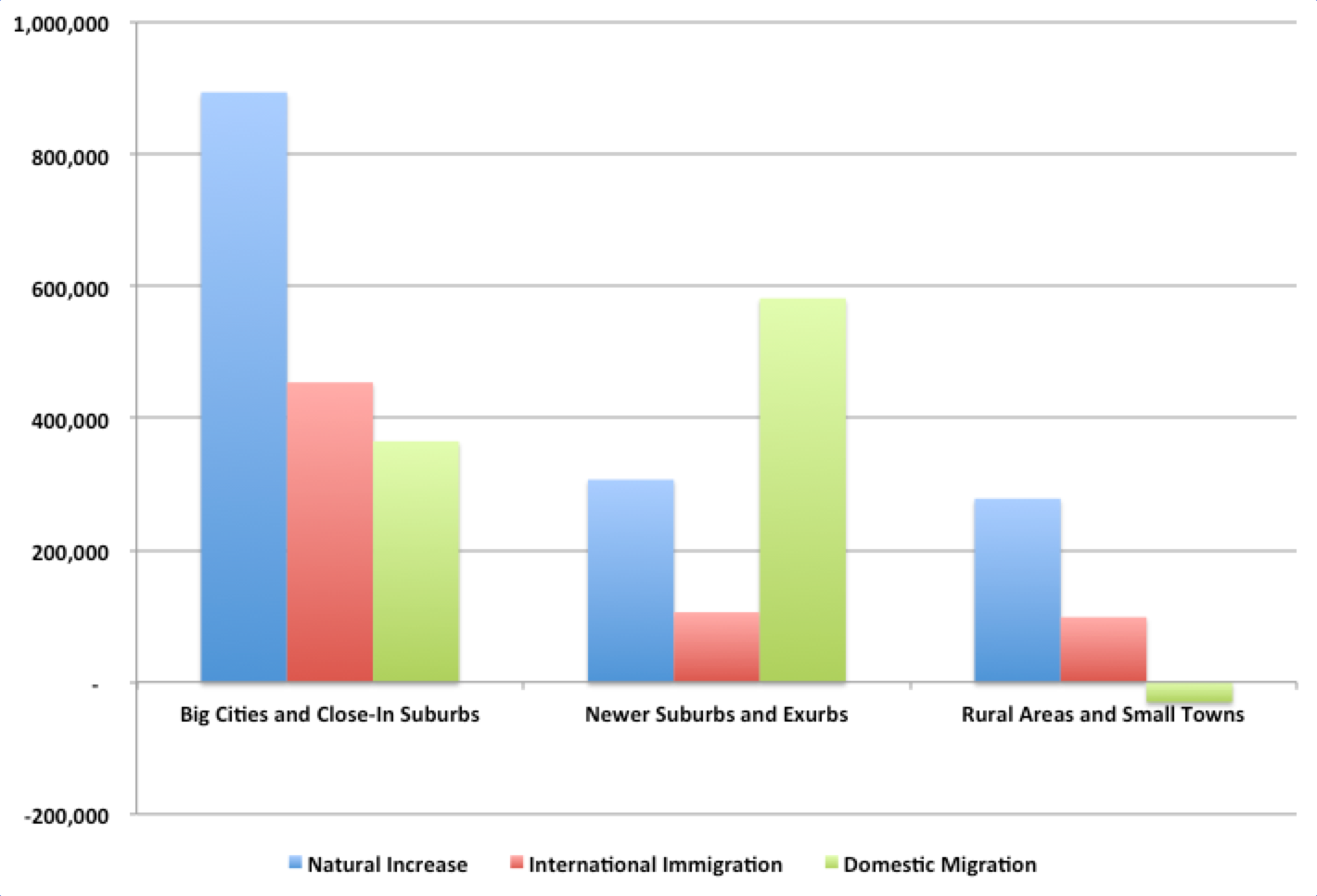The constant drumbeat we hear from the national media is that Texas is the big destination inside the United States. More people are moving from other parts of the U.S. to Texas than to anywhere else.
And while this is true, it’s worth noting that these domestic migrants aren’t going just anywhere in Texas – or, more precisely, they’re not going everywhere. They are headed to one type of place in particular: newer suburbs and exurbs close to the fringe of Texas’s big metropolitan areas.
Recent census data shows that, between 2010 and 2017, a net total of more than 900,000 people moved to Texas from other parts of the country. But almost 600,000 of them moved to counties that can best be described as “newer suburbs and exurbs.” That’s far more than moved to counties that can best be described as “big cities and close-in suburbs” – even though those counties had much greater population growth overall.
Overall, about 3 million people were added to Texas’s population during that seven-year period. And while domestic migrants get a lot of the publicity, they don’t represent most of the growth. Statewide, about half of the population growth – close to 1.5 million people – were added through “natural increase” (births minus deaths). About 30 percent were domestic migrants, coming from other states, and about 20 percent were international immigrants, coming from other countries.
For the purposes of this analysis, we used a variation on Brookings Institution demographer William Frey’s typology on American counties, which he graciously provided to us. By combining some of Frey’s categories, we divided the state into three types of counties: big cities and close-in suburbs (places like Harris and Dallas counties); newer suburbs and exurbs (places like Montgomery and Waller counties); and rural areas and small towns, which represent most of the geographical size of Texas but a minority of its population.*

The accompanying chart shows how this 50-30-20 breakdown varies across different types of places:
- Most natural increase is occurring in big cities and close-in suburbs. In spite of the popular perception that new suburbs and exurbs are the nation’s most family-oriented places, it is these closer-in, more urban locations that are Texas’s baby factories.
- Most international immigration is also occurring in big cities and close-in suburbs. These locations are where existing immigrant communities are located and where jobs for both high-skill and low-skill immigrants tend to be created.
- The newer suburbs and exurbs are now Texas’s domestic migration machines. Close to 60 percent of all net domestic in-migration went to these locations – and the number of domestic in-migrants far exceeded the natural increase in these places.
- Texas’s small towns and rural areas really are very different from the rest of the state, even though experts say these locations retain significant political power. The vast majority of population increase (close to 80 percent) comes from births over deaths. There’s very little international immigration. And domestically, more people are leaving these locations than moving to them – the only type of place in Texas where this is the case.
*Frey divides the nation’s counties as follows: core cities, high-density suburbs, mature suburbs, emerging suburbs, exurbs, and “all other.” Texas has no core cities by his definition (major cities are included in counties in other categories). For the purposes of this analysis, we combined “high-density” and “mature” suburbs into “big cities and close-in suburbs.” We combined “emerging suburbs” and “exurbs” into “newer suburbs and exurbs;” and we called “all other areas” “rural areas and small towns.” We used census population estimates from the years 2010 to 2017. You can find Frey’s analysis of national trends of the same data here.

